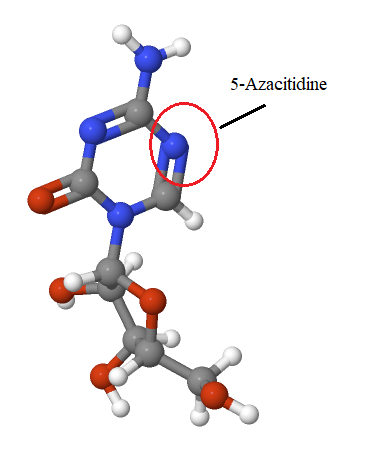|
|
|
Nursing Pharmacology Chapter 33-34: Anticancer Drugs
Antimetabolites
Pyrimidine Analogues:
Antimetabolites include pyrimidine analogs which inhibit both DNA and RNA function.1
![]() These agents
inhibit synthesis of DNA precursors and by group include the
fluoropyrimidines and certain purine analogs such as 6-mercaptopurine (6-MP)
and 6-thioguanine (6-TG).
These agents
inhibit synthesis of DNA precursors and by group include the
fluoropyrimidines and certain purine analogs such as 6-mercaptopurine (6-MP)
and 6-thioguanine (6-TG).
Other analogs including cytidine and adenosine nucleoside analogues are incorporated into DNA but block elongation and function.
DNA consists of four bases, two pyrimidines consisting either of thymine and cytosine and two purines, guanine and adenine.
In the case of RNA, uracil substitutes for thiamine as a base.
The antineoplastic effects of pyrimidine analogs is based on the idea that the precursors first enter the tumor cells and then are activated later to cytoxic forms which inhibit DNA synthesis.1
One example uses a well-known antineoplastic drug 5-fluorouracil (5-FU).
The initial step involves conversion of the 5-FU analog to an FdUMP (5-fluoro-2'-deoxyuridine 5'-monophosphate).
FdUMP inhibits thymidylate synthase, enzyme required to catalyze the conversion of deoxyuridine monophosphate (dUMP) to deoxythymidine monophosphate (dTMP).1
Modifications of naturally occurring base and deoxyribonucleoside analogues
|
|
|
|
|
|
|
Capecitabine (Xeloda) |
|
|
 |
|
|
|
|
5-Azacytidine (Vidaza) |